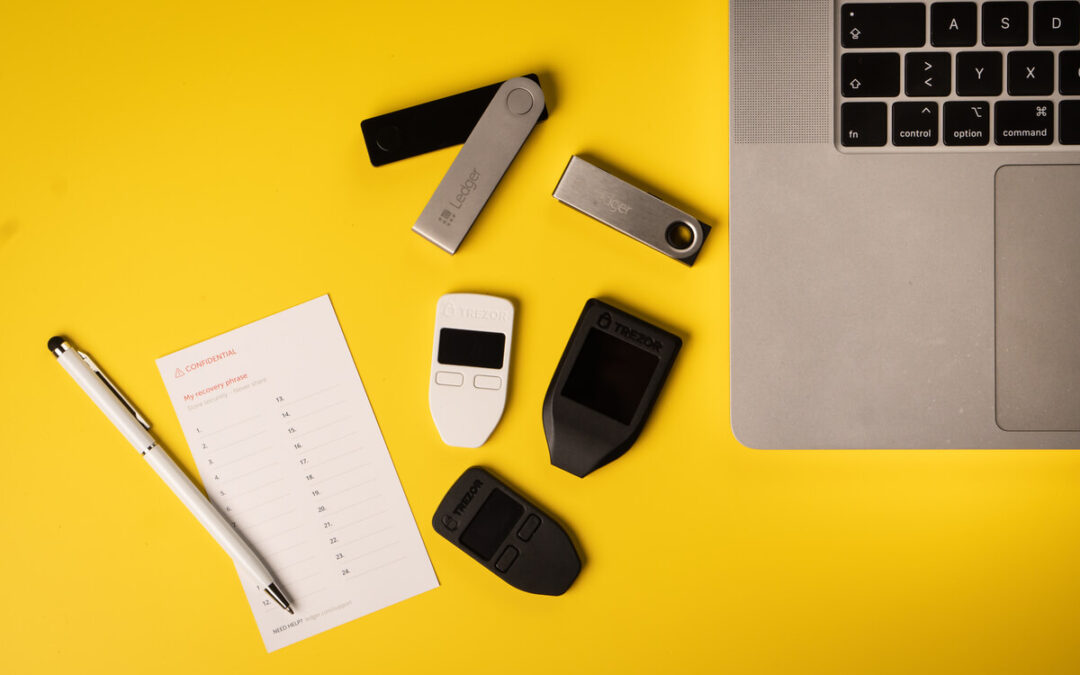Cryptocurrency wallets are susceptible to many of the same threats as online systems in general. A secure cryptocurrency wallet is essential for protecting users’ investments and preventing fraud.
Wallet security depends on a combination of factors, including user education, phishing prevention tools, regular software updates and coding practices that reduce vulnerabilities that malware exploits.
1. Use a Hardware Wallet
Hardware wallets offer one of the best solutions for protecting cryptocurrency assets against online threats, keeping private keys offline while providing reliable protection against digital theft. By adhering to best practices users can further strengthen the security of their hardware wallets and protect their digital assets.
Hardware wallets allow for secure transactions by providing transaction details to be signed off on. Your private key remains undisclosed on any connected devices; therefore even if malware infiltrates them it won’t gain access to your assets. In addition, these devices often come equipped with PIN protection options that further reduce hacking or phishing risk.
Hardware wallets provide users with an option for recovery in case of loss or theft, such as using their seed phrase to generate new private keys and access their crypto. This feature can prove especially valuable when encountering fire, water, or wear and tear damage to their device.
Hardware wallets offer the safest method of cryptocurrency storage, although there are other forms, including paper and sound ones. But they do come with drawbacks, including an upfront cost and limited user experience. When purchasing one from an untrusted source to avoid purchasing devices with compromised integrity. Also it would be prudent to store both wallet and recovery seed safely away from fire and water sources.
2. Use Two-Factor Authentication
As the cryptocurrency market expands, so too has its need for secure wallet features to protect it against unauthorized access and cyber threats. By investing in these features, your crypto will remain safe from potential danger.
Passwords provide the first line of defense between you and potential hackers. Unfortunately, however, passwords can easily be breached through social hacking techniques or other means. To reduce the risk of an attack and minimize damage, strong passwords using combinations of letters (both uppercase and lowercase), numerals, symbols, and digits should be created and updated regularly to mitigate their potential.
To safeguard the security of your wallet, consider employing two-factor authentication (2FA). This requires additional forms of verification beyond just password entry – for instance a code sent directly to your phone or biometric scans – protecting you against attacks that target email or phone number addresses such as SIM swapping.
If possible, public WiFi networks should also be avoided when accessing your crypto wallet and making transactions. Such networks are more vulnerable to cyberattacks, putting your security at risk. Be sure to choose a reputable exchange that offers wallets and provides compensation in case of attack; multiple breaches at one exchange should serve as a red flag and it’s best to look elsewhere for wallet services.
3. Keep Your Seed Words Safe
Seed phrases (sometimes known as recovery phrases or mnemonic phrases) are generated by crypto wallets to allow access to lost or corrupted wallets, providing users with the means of recovering their wallets if lost or corrupted. As this information is critical in recovering wallets, users are advised to write their seed phrases down for safekeeping.
Many wallets also advise users to store their seed phrase securely; however this method carries its own risks. Paper backups can fade over time due to exposure to mildew, fire and other environmental hazards; additionally written seed phrases can easily become misplaced or stolen making them vulnerable to hackers.
Even though storing backups on USB or hard drives may seem safer than paper backups, they still should not be your only choice. Since these devices connect to the Internet and can be compromised through hacking or physical damage or destruction.
The safest way to secure your recovery phrase is with a metal backup tool such as Ledger Cryptosteel Capsule or Blockplate, offering protection from fire and water, plus locking in an extra secure location for added peace of mind. While more expensive than paper options, this method offers significant peace of mind when it comes to safety and security.
4. Keep Your Private Keys Secure
Crypto users must ensure their private keys, used for accessing and managing wallets, remain safe. There are various means available to keep these safe; hardware wallets and cold storage provide secure storage away from online threats; others include password-protected files or physically placing private keys into a safety deposit box or safe.
Protecting your wallets is of utmost importance, as losing a private key could result in irreparable damages to crypto assets. To safeguard against this happening, never share or reveal your private keys with anyone, and be sure to backup them regularly. It is also best practice to regularly change passwords and implement two-factor authentication as an extra layer of defense against SIM swap scams.
Malware and phishing attacks are two other threats to cryptocurrency wallets, so to reduce the risk of these, use an anti-virus on all devices as well as refraining from clicking suspicious links or websites. Also consider dedicating one device solely for wallet management rather than one used for general browsing and potentially unsafe activities; always double-check recipient wallet addresses before sending funds their way.



